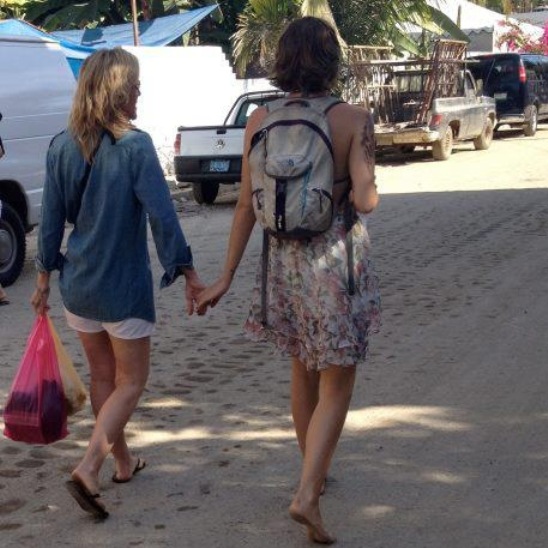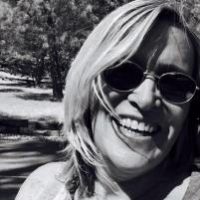
Traveling through life, we get many choices, including what to do with the stuff that happens along the way.
And by stuff, I mean the things that hurt. This is our “emotional baggage.”
Most people know the term. It’s commonly used to describe the tough stuff we go through in life, the wounding: hurt, shame, grief, pain, suffering, guilt, regret, and all the rest.
Emotional scars result from the healing of emotional wounds, which are universal—we all have them. The more healing we do, the healthier our scars become.
All my life, I have been told that I am strong. It is usually stated as a compliment. “I couldn’t possibly have survived all the stuff you’ve been through, all the pain and hardship. You are so strong!”
I used to seethe with anger toward the people making those comments. I wanted to ask, “You think I volunteered for that?”
I felt as though people were telling me I was dealt those cards because I could handle it.
When I was 27 years old, three months into a high-risk pregnancy, and newly relocated to a town with no friends or family, my dad died. He didn’t give us any warning. He just died in the front yard while washing his car.
That day, I spoke with my Aunt Ginnie on the phone. She was my dad’s only sister in a family with seven boys. She was the matriarch of our family. She was a force. She told me that everything was going to be okay—that my mother and my four siblings and I would be just fine, because I was strong, and I would hold the family together.
I remember holding that 1,000-pound phone to my ear and wondering how I could possibly measure up to her standards. How could I be strong?
As my life progressed, I had many more painful experiences, and I came to believe that life had been rough on me, unfair. I used it as an excuse not to grow, not to move beyond the pain. I wasn’t going anywhere. I was stuck.
Several years later, when my 22-year-old son was hit by a car traveling 50 miles per hour and was barely clinging to life in the neuro-trauma intensive care unit, we were hit by a multitude of freight trains.
The first five days were spent at the hospital: not knowing if he would live, watching his intracranial pressure rise and rise, watching my daughter’s heart break, giving permission for a surgery that had as much chance of killing him as it did of saving his life, and on and on.
A few days into this crisis, a family came to us whose daughter had sustained a severe traumatic brain injury two years prior. They sat with us in the intensive care waiting room, they held us, they cried with us, and they shared their story of hope.
There was so much love and beauty in that tragic place—we were not strong, we were carried during a time we could not stand on our own. It was because of their experience and their willingness to process their pain and grief that they were able to hold us, and as a result, continue in their healing.
As I see it, we have choices in life, no matter the circumstance. At times, our choices are limited. I couldn’t choose to bring my dad back to life or prevent my son’s accident. I could, however, choose how I would handle the situation.
When my dad died, I sucked it up, carried along the wound, and burdened others with the weight of it—the weight of losing my dad, the weight of an incomplete relationship.
We had never said I love you to one another. I think we were working our way toward it. I grieved something I’d only wished for. I was strong on the outside and sick on the inside. When the car hit my son, I could suck it up in front of him. Even though he was deep in a barbiturate-induced coma, I believed that he could feel our presence; he could sense our energy. I would not let him know how afraid I was.
Outside of the intensive care unit, I lacked the emotional storage capacity to stuff it down—there was too much. I didn’t have strength; I needed others to feed me and care for me, to hold me up so I could stand for my son. I ended up stronger and healthier after my son’s accident than after my dad’s death because I was so weak, I was forced to draw on others’ strength.
In my opinion, emotional baggage consists of the painful experiences we have not processed. Instead, we suck that pain up and cram all that stuff away—but it doesn’t go away. We can put it in a closet, hide it from ourselves and the world, and trudge through life. Like a cancer, we allow it to eat us alive from the inside out. And instead of healing it, we ask others to carry it for us.
For example, let’s say that in a new relationship, the baggage owner tells the love interest that they were cheated on in the past, so they have “trust issues.” It’s really saying, “Hey I’ve got some stuff from my past that I haven’t processed, so I’m going to ask you to take responsibility for it.” Emotional hoarders are usually generous people who are happy to share; as a matter of fact, they will let you carry all of their baggage if you’re willing. I know all about this—I was one.
Emotional scarring is something completely different.
If you are over the age of 20, you probably have a few scars by now. I like the scar on the side of my knee, because I got it when I was 12 while learning to ride a unicycle. The seat had exposed metal, and it cut my leg in one of a hundred falls I took that first day of practice. I didn’t notice it until the blood tickled my ankle, and when I scratched it, it felt wet and sticky. That’s when I looked down and saw the blood and the open wound. I told my mom it was a little cut, and I just needed a bandage. I didn’t want her to see it, because going to get it stitched would have taken precious time away from my practice.
My dad said he’d buy me my own unicycle when I could ride my brother’s to the end of the driveway, and I wanted my own more than anything. The scar reminds me of that day and my work, sweat, and determination. It reminds me of the joy I felt going to the bike shop with my dad to get my own unicycle. I still have it. I can still ride it.
Emotional scarring is like physical scarring in that we are left with a reminder of an event. When I look at a scar on my body, I remember what happened and what I learned from it. The same is true with emotional scarring: we carry a memory, a scar on our heart from what hurt us. It is there to remind us and teach us. When we meet someone else who is in the midst of a similar event, we are able to walk beside that person, hold their hand, and possibly guide them—because we have walked that path, we know that hurt, and we carry that scar.
I no longer pity myself.
I don’t think the world has singled me out to pick on.
If I were to measure all the pain I have experienced against the joy, there would be no contest. The joy far outweighs the pain. Yes, the tough stuff has come in large doses, but those experiences are few and far between in comparison to the daily joy. It’s all around me: in a hummingbird’s beauty, tiny new buds appearing on the branches of the dogwood tree just beyond my balcony, bringing the hope of new life after winter’s dormancy, and especially in my two-year-old grandson’s laughter.
I know now that suffering is part of the human experience. No one gets through life unscathed. We all get beat up from time to time.
But we also get a say in how to move forward and how to move beyond the pain. We get a say in how we want to see and do life. It’s all about perspective. It’s a matter of choice.
The difference—in the choice between having emotional baggage and healthy emotional scars—is work. It’s digging down deep and grieving and getting dirty. It’s processing all the fear and anger and regret, all of it, by reading, writing, praying, meditating, exercising, dancing, crying, screaming, doing whatever it is that makes you feel—but most of all, by listening.
I found guides, and I listened. I trusted that they knew the way. I wanted what they had—freedom from fear and all the rest of it. I wanted it so bad, I was willing to do the work. I knew the path of emotional hoarding; I was a master of it. I also knew it only brought more suffering. Choosing the path of healing isn’t always the easiest way to go, but it is worth every tear, every pound of flesh, every minute spent on it.
I did not make a decision to “let it go” and suddenly find myself miraculously happy. I worked, and I trusted, and I still work to this day. I surrendered my will and control and chose the path of faith and hope.
Today, I travel light. I may have a small carry-on, but I’m working on traveling without any luggage. Today, I see my scars, and I lovingly respect them. Today, I live in gratitude for the healing that comes through helping others to heal and seeing the beauty in their scars.
~
Author: Terri Gama
Image: Author’s own; Pixabay
Editor: Catherine Monkman
Copy Editor: Yoli Ramazzina
Social Editor: Yoli Ramazzina






Read 1 comment and reply